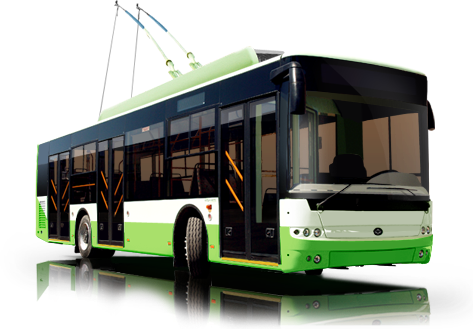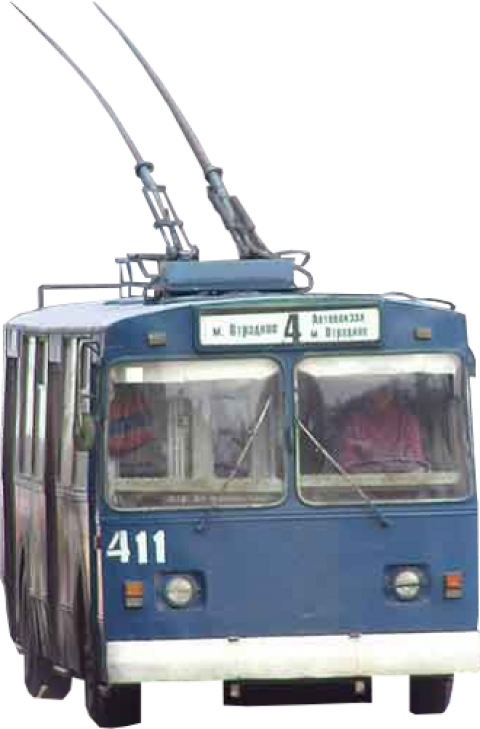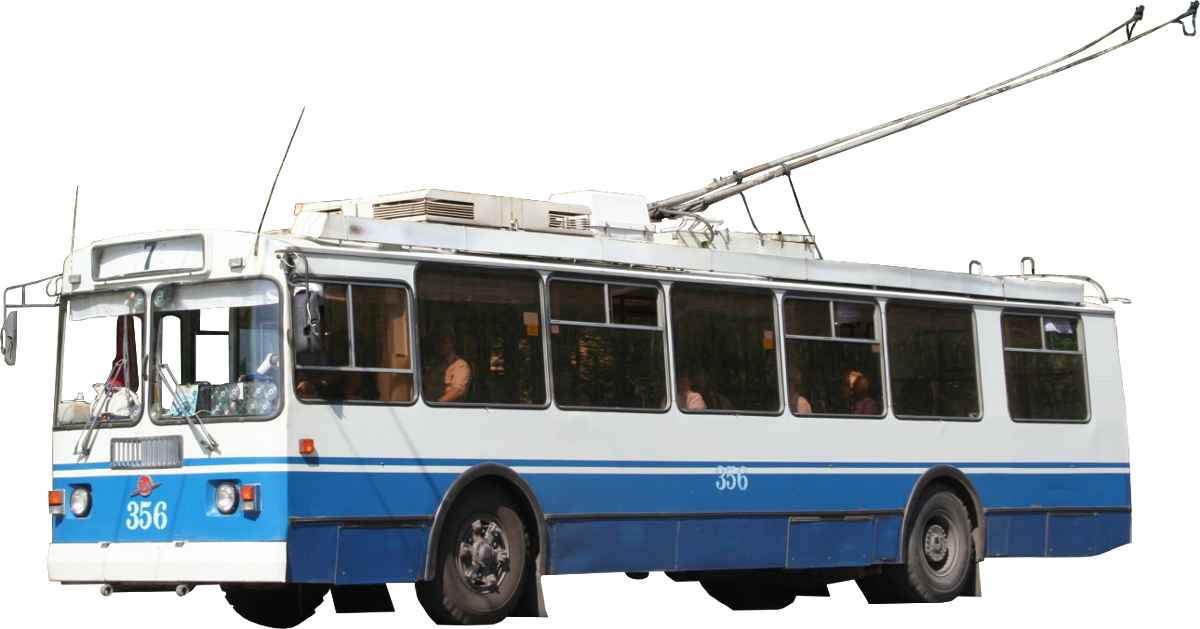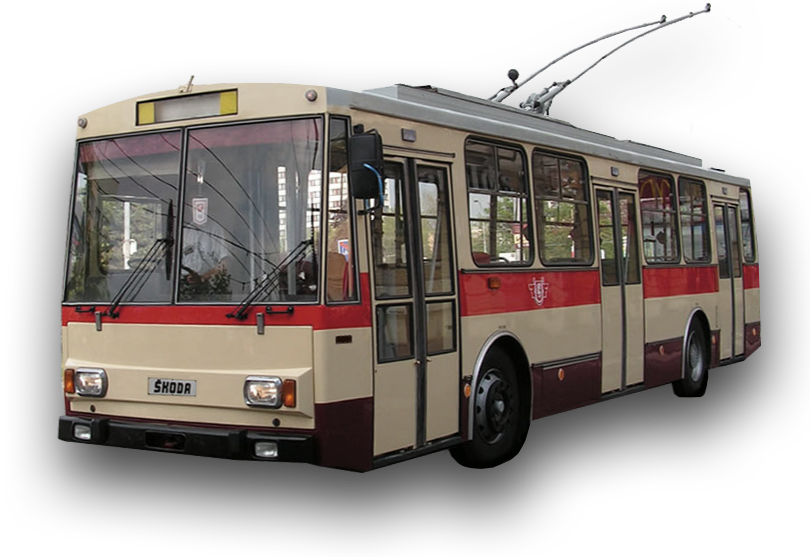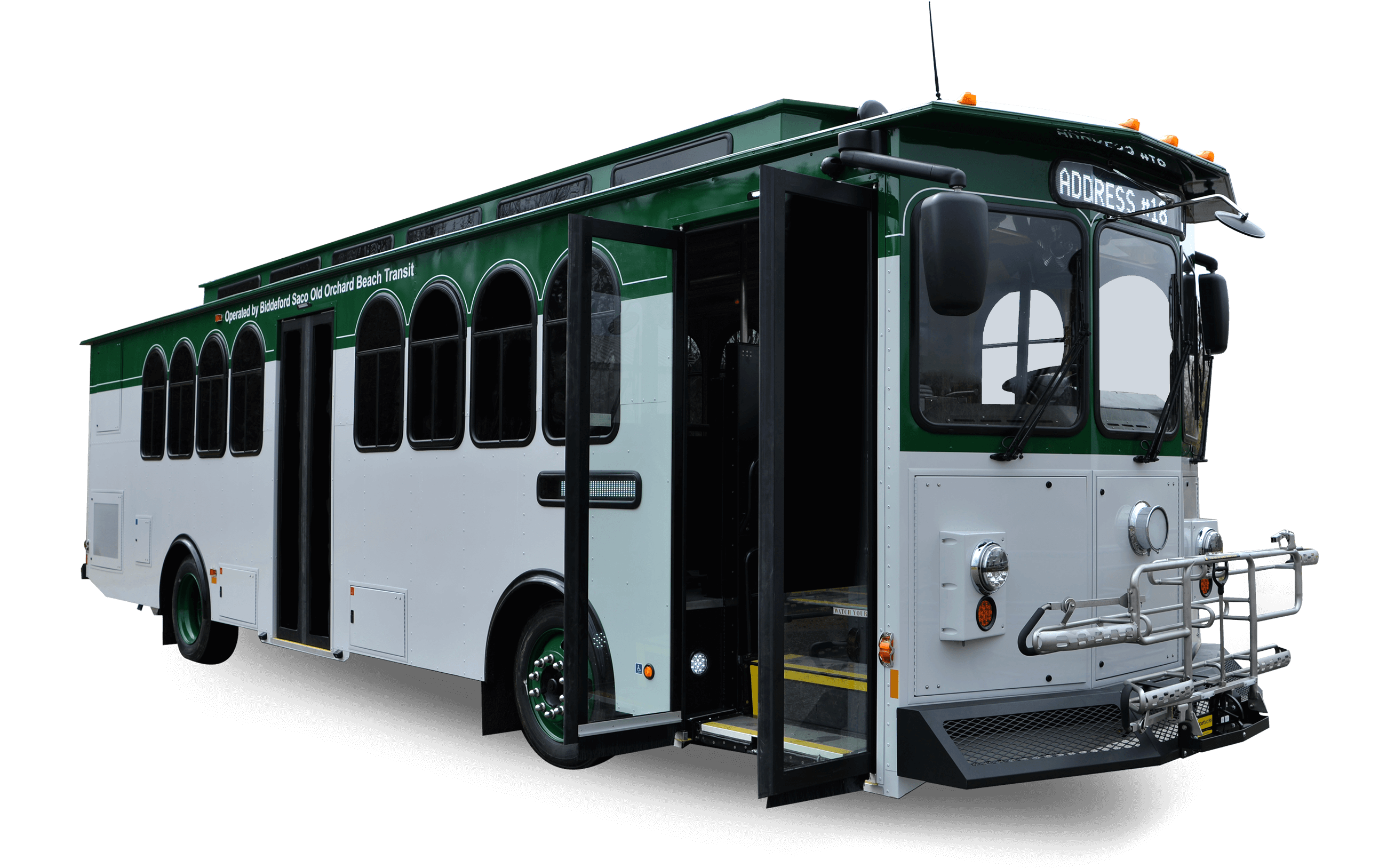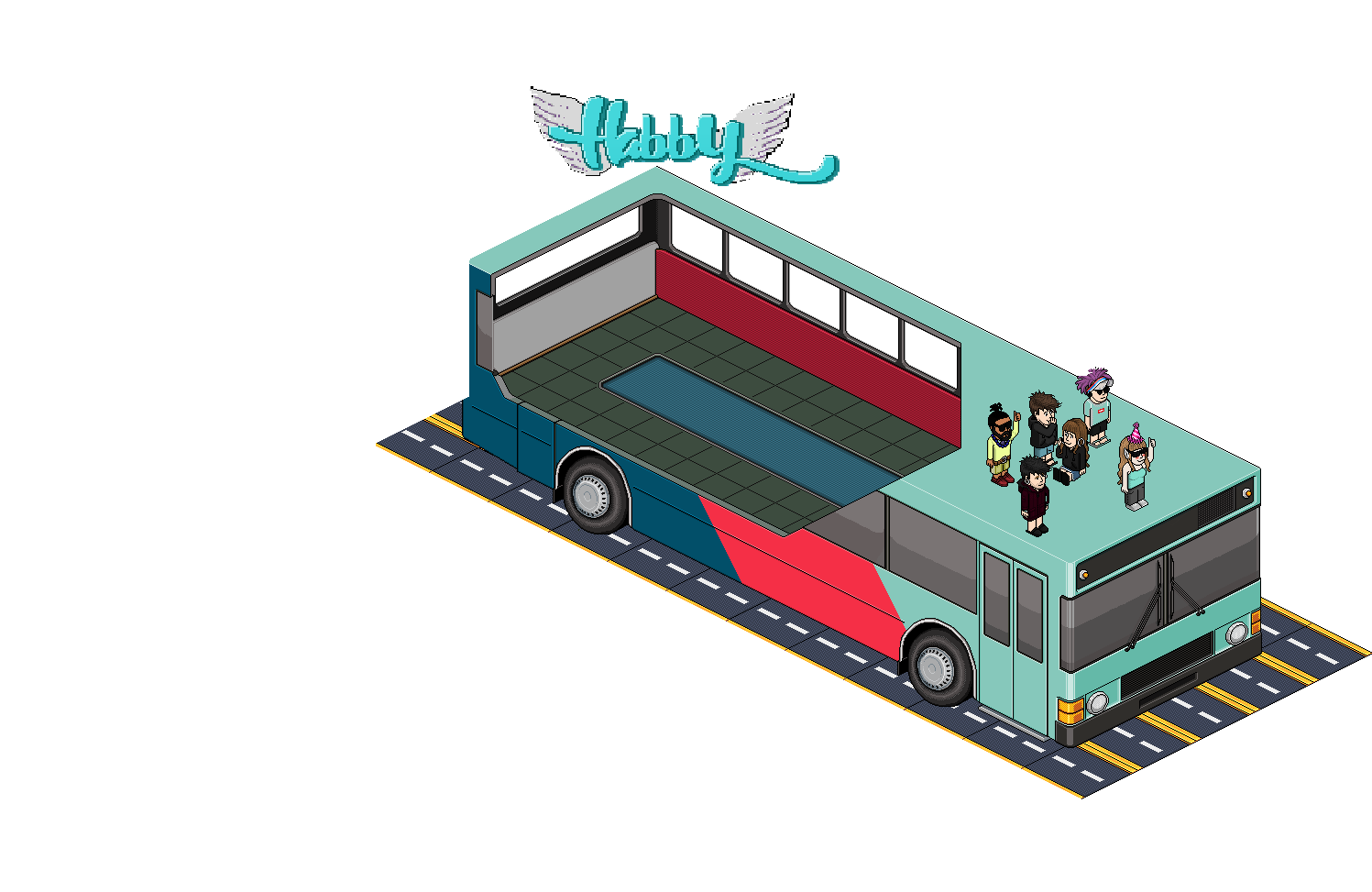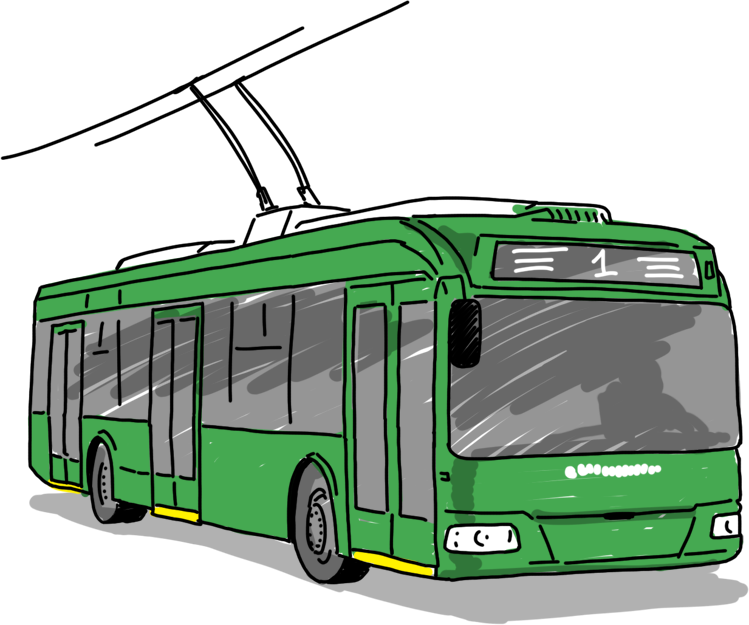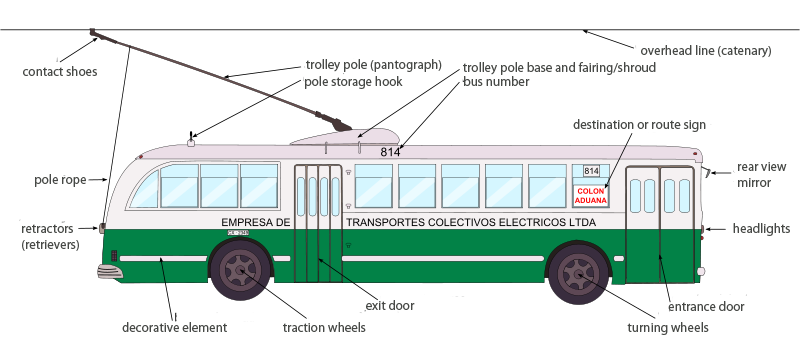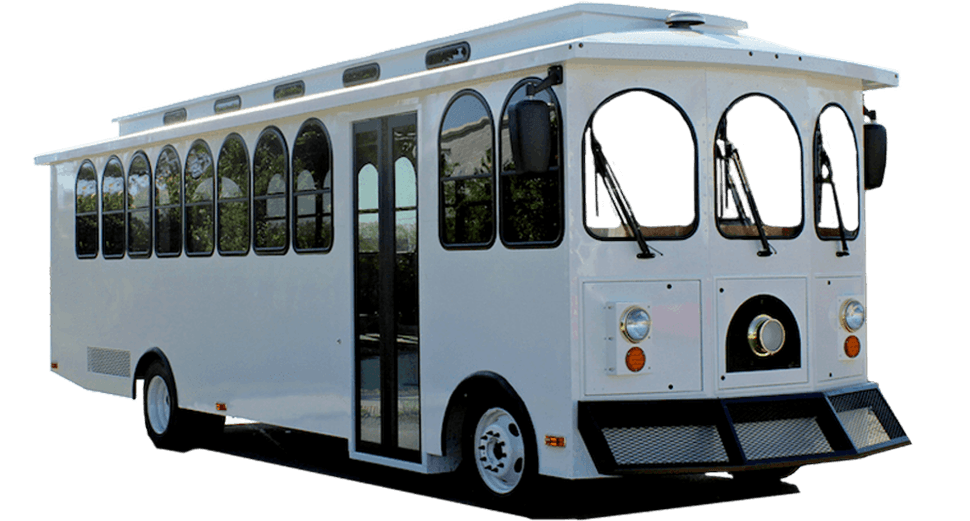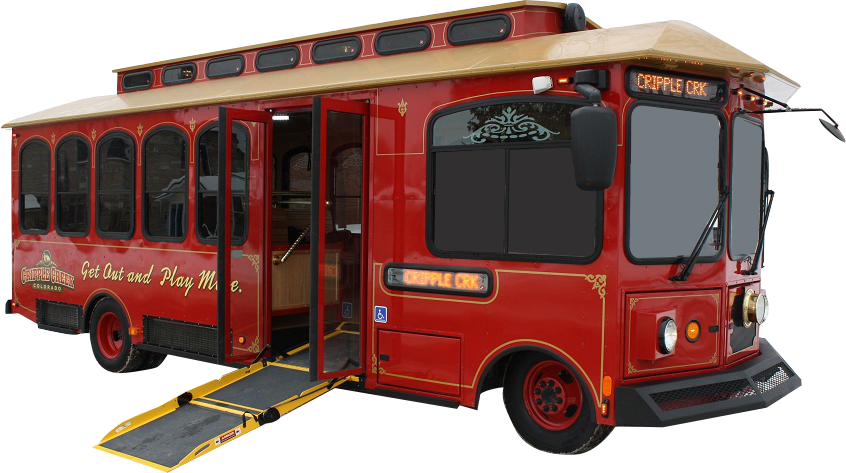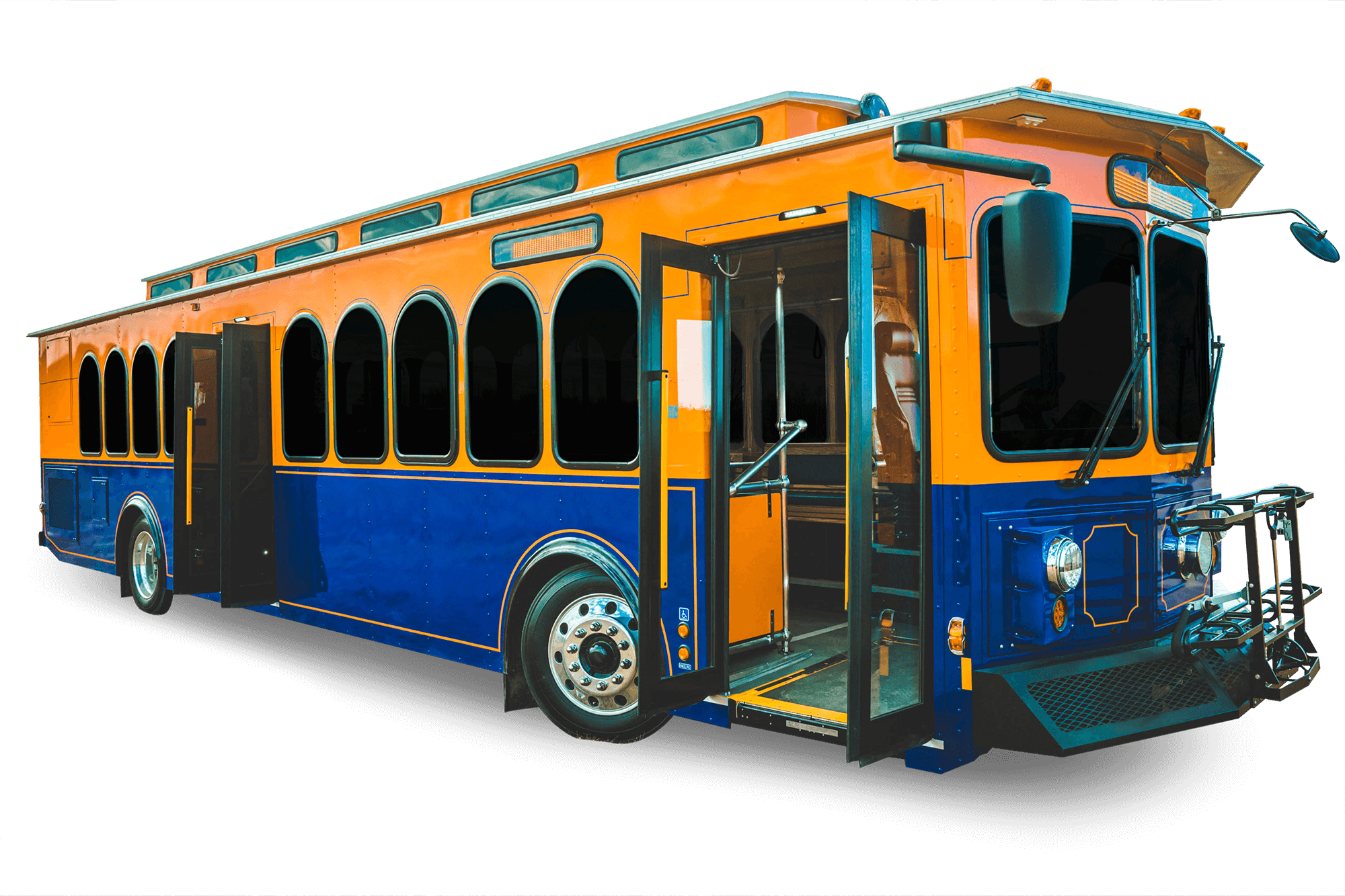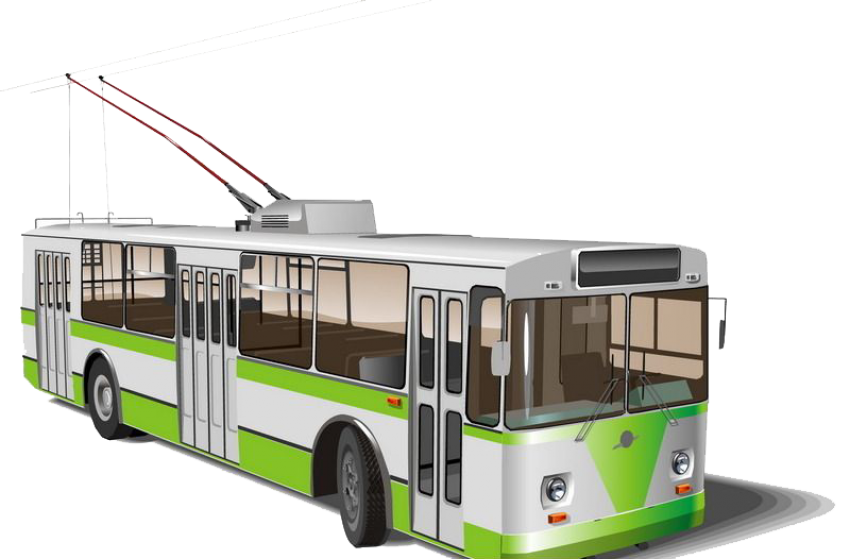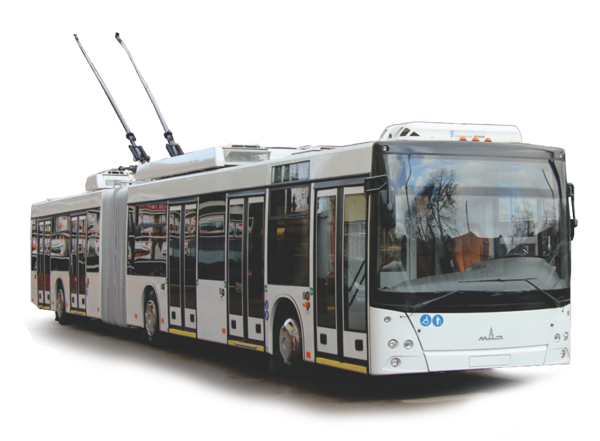Download top and best high-quality free Trolleybus PNG Transparent Images backgrounds available in various sizes. To view the full PNG size resolution click on any of the below image thumbnail.
License Info: Creative Commons 4.0 BY-NC
A trolleybus is an electric bus that uses spring-loaded trolley poles to take electricity from two overhead wires (usually hanging from roadside posts). To complete the electrical circuit, two wires and two trolley poles are necessary. A tram or streetcar, on the other hand, usually uses the track as the return path, requiring just one wire and one pole (or pantograph). They also distinguish themselves from other types of electric buses, which rely on batteries. Although 600-volt direct current is the most prevalent form of power, there are exceptions.
Around 300 trolleybus systems are now in use in cities and towns throughout 43 countries. There were about 800 trolleybus systems in all, although only around 400 operated at any given time.
Dr. Ernst Werner Siemens exhibited his “Elektromote” in a Berlin neighborhood on April 29, 1882, and the trolleybus was born. This experiment was carried out until June 13, 1882, after which there were little advancements in Europe, while independent tests were carried out in the United States. Another vehicle that could operate on or off tracks was exhibited in Berlin in 1899. After four years of experiments, Louis Lombard-Gérin debuted an experimental line with a circular path around Lake Daumesnil that transported people at the Paris Exhibition of 1900. Six locations were visited, including Eberswalde and Fontainebleau.
On July 10, 1901, Max Schiemann launched the world’s fourth passenger-carrying trolleybus system in Bielatal (Biela Valley, near Dresden), Germany. Schiemann designed and developed the Bielatal system, as well as the under-running trolley current collecting system, which uses two horizontally parallel overhead wires and stiff trolleypoles that are spring-loaded to hold them up to the wires. Schiemann invented what is now the conventional trolleybus current collecting system, despite the fact that this system only functioned until 1904.
There were numerous alternative techniques of current collecting in the beginning. Between 1902 and 1904, the Cédès-Stoll (Mercédès-Électrique-Stoll) system was operational near Dresden, and 18 more systems followed. In Bremen, the Lloyd-Köhler or Bremen system was tested with five additional installations, while in Italy, the Cantono Frigerio system was employed.
Electric canal boats and trackless freight lines were also constructed at this time.
On June 20, 1911, Leeds and Bradford were the first cities in the United Kingdom to employ trolleybuses. The public was not permitted to the Bradford route until the 24th, despite the fact that it opened on June 20. Bradford was also the last city in the UK to have a trolleybus system, which ended on March 26, 1972. The Bradford Trolleybus Association presently owns the final rear-entrance trolleybus in operation in the United Kingdom, which was also in Bradford.
Birmingham was the first city in the UK to replace trams with trolleybuses, while Wolverhampton became famed for its trolleybus designs under the leadership of Charles Owen Silvers. In the United Kingdom, there were 50 trolleybus networks, with London’s being the biggest. By the time trolleybuses arrived in Britain in 1911, the Schiemann system was well established and was the most common, although the Cédès-Stoll (Mercédès-Électrique-Stoll) system was tried in West Ham (in 1912) and in Keighley (in 1913).
Download Trolleybus PNG images transparent gallery.
- Trolleybus PNG Images
Resolution: 4181 × 2837
Size: 1110 KB
Image Format: .png
Download
- Trolleybus PNG Photo
Resolution: 787 × 344
Size: 96 KB
Image Format: .png
Download
- Trolleybus PNG Photos
Resolution: 473 × 329
Size: 160 KB
Image Format: .png
Download
- Trolleybus PNG Pic
Resolution: 480 × 729
Size: 285 KB
Image Format: .png
Download
- Trolleybus PNG Picture
Resolution: 1200 × 629
Size: 636 KB
Image Format: .png
Download
- Trolleybus PNG
Resolution: 889 × 849
Size: 255 KB
Image Format: .png
Download
- Trolleybus Transparent
Resolution: 810 × 557
Size: 440 KB
Image Format: .png
Download
- Trolleybus
Resolution: 496 × 496
Size: 34 KB
Image Format: .gif
Download
- Trolleybus Background PNG
Resolution: 2600 × 1627
Size: 788 KB
Image Format: .png
Download
- Trolleybus No Background
Resolution: 1497 × 973
Size: 61 KB
Image Format: .png
Download
- Trolleybus PNG Background
Resolution: 1264 × 1577
Size: 35 KB
Image Format: .png
Download
- Trolleybus PNG Clipart
Resolution: 749 × 625
Size: 207 KB
Image Format: .png
Download
- Trolleybus PNG Cutout
Resolution: 800 × 350
Size: 64 KB
Image Format: .png
Download
- Trolleybus PNG File
Resolution: 970 × 521
Size: 148 KB
Image Format: .png
Download
- Trolleybus PNG Free Image
Resolution: 671 × 342
Size: 138 KB
Image Format: .png
Download
- Trolleybus PNG HD Image
Resolution: 846 × 473
Size: 714 KB
Image Format: .png
Download
- Trolleybus PNG Image File
Resolution: 2000 × 1333
Size: 551 KB
Image Format: .png
Download
- Trolleybus PNG Image HD
Resolution: 850 × 559
Size: 298 KB
Image Format: .png
Download
- Trolleybus PNG Image
Resolution: 600 × 441
Size: 254 KB
Image Format: .png
Download
- Trolleybus PNG Images HD
Resolution: 487 × 433
Size: 16 KB
Image Format: .png
Download


